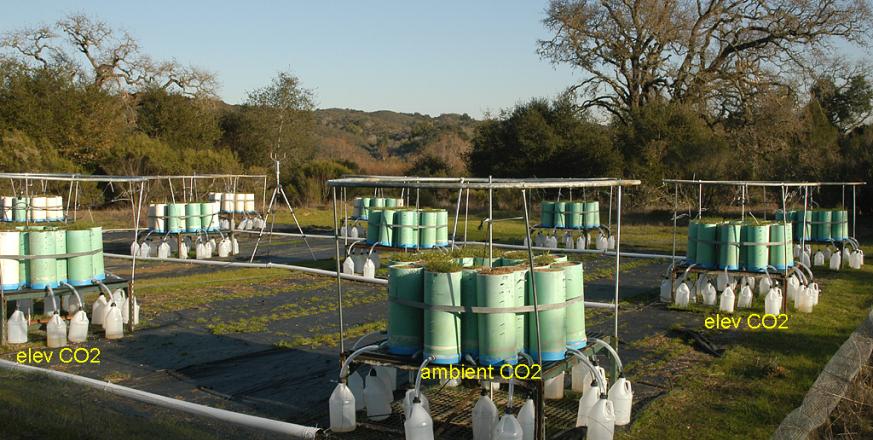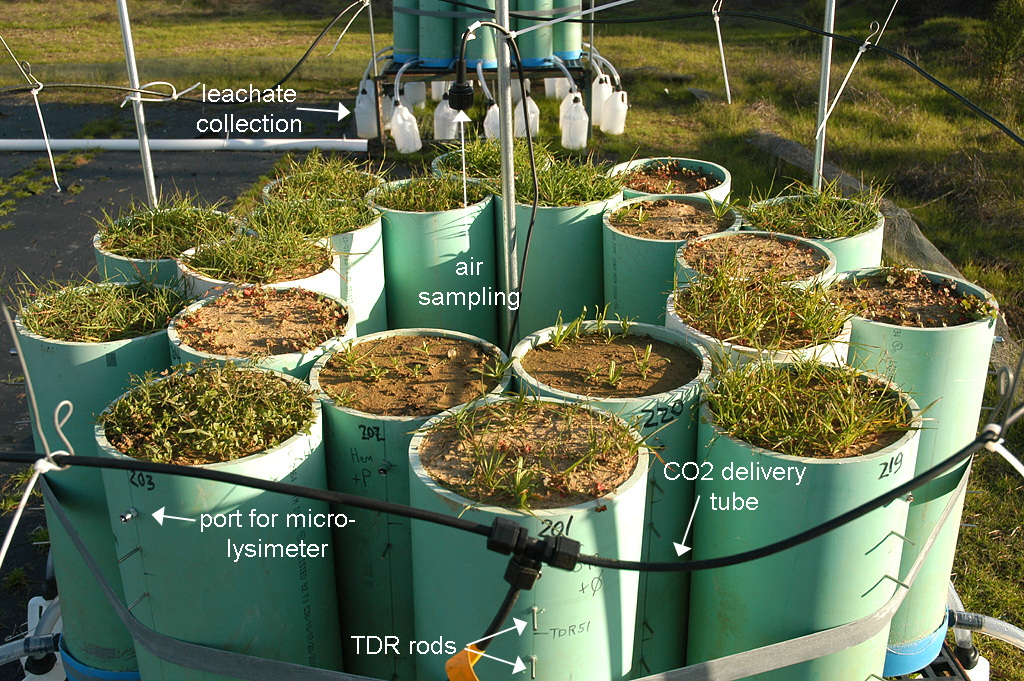Phosphorus limitation of ecosystem responses to global change

Summary
The Jasper Ridge Global Change Experiment (JRGCE) began an experiment located near its main field plots to test a new hypothesis concerning responses of ecosystems to environmental change. The hypothesis is based on six years of field results in which elevated CO2 had a small negative effect, or none at all, on plant biomass, together with a reversal of this pattern--enhanced production under elevated CO2--in plots burned by a wildfire in 2003. The team hypothesizes that phosphorus availability limits the response of California grassland to elevated CO2, a limitation that can be temporarily reversed when fire liberates phosphorus that was trapped in aboveground litter.
This study tests the P-limitation hypothesis by examining ecosystem responses to additions of nitrogen, CO2, and phosphorus, applied singly and in all possible combinations. This factorial approach allows one to ask whether, for example, the response to elevated CO2 differs depending on whether nitrogen and/or phosphorus is added. To keep the experiment manageable, the other treatments applied factorially in the field plots (added water and heating) were omitted here.
The experiment is being conducted in pots in order to study defined plant communities and some monocultures, and to obtain more complete budgets of N and P, including amounts that leach below the rooting zone. The pots in this study are equipped with collection bottles for monitoring leachate, steel rods for monitoring soil moisture at various depths using time domain reflectometry, and micro-lysimeters for sampling small quantities of water in the soil.
Phosphorus is essential for plant growth because it is an element in nucleic acids, in energy storage and transfer compounds, in molecules that make up cell membranes, and in other biological compounds. This study will help determine whether, in soils where phosphorus is near-limiting, environmental changes may tip the ecosystem more towards P limitation.
Project Location (Sector 30)
 |  |  |  |  |  |  |  |  |
 |  |  |  |  |  |  |  |  |
 |  |  |  |  |  |  |  |  |
 |  |  |  |  |  |  |  |  |
 |  |  |  |  |  |  |  |  |
 |  |  |  |  |  |  |  |  |




